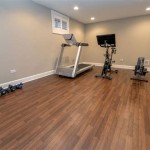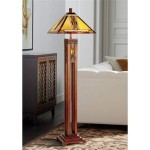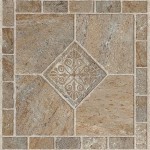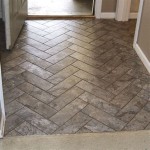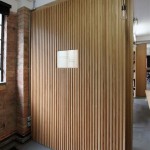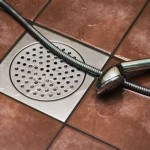Dark Wood Floors in Kitchens: Aesthetics, Practicality, and Considerations
Dark wood floors have risen in popularity as a sophisticated and visually striking flooring choice for kitchens. The deep, rich tones of dark wood can create a luxurious and inviting ambiance, contrasting beautifully with lighter cabinetry and countertops. However, selecting dark wood floors for a kitchen requires careful consideration of both the aesthetic benefits and the practical challenges associated with this design choice. This article explores the visual advantages, maintenance requirements, and potential drawbacks of incorporating dark wood flooring into a kitchen space.
Aesthetic Appeal and Design Versatility
The visual impact of dark wood floors in a kitchen is undeniable. They exude elegance, warmth, and a sense of timelessness. The depth of color can make a kitchen feel more grounded and substantial, providing a strong foundation for the overall design. Dark wood floors serve as a neutral backdrop, allowing other elements in the kitchen, such as cabinetry, appliances, and décor, to stand out. This versatility makes them compatible with a wide range of design styles, from traditional and rustic to modern and minimalist.
Dark wood floors create a dramatic contrast when paired with light-colored cabinets, such as white, cream, or light gray. This juxtaposition can brighten the space and highlight the clean lines of the cabinetry. The contrast also helps to visually define the different zones within the kitchen, such as the cooking area, the dining area, and the work island. Conversely, dark wood floors can be successfully integrated with darker cabinetry for a more moody and sophisticated look. In this case, it's crucial to incorporate ample lighting to prevent the space from feeling too dark or claustrophobic.
The specific species of wood chosen for dark flooring contributes significantly to the overall aesthetic. Woods like walnut, ebony, and stained oak offer rich, dark tones with varying grain patterns. Walnut is known for its smooth, even grain and warm brown undertones, while ebony provides a deep, almost black color with a very fine grain. Dark-stained oak offers a classic look with a prominent grain pattern that adds texture and visual interest. The choice of wood species should complement the style and color palette of the kitchen.
The finish of the dark wood floors is another important factor in achieving the desired aesthetic. A high-gloss finish can create a sleek and contemporary look, reflecting light and making the space feel more open. However, high-gloss finishes can also be more susceptible to scratches and show more dirt and footprints. A matte finish, on the other hand, provides a more subdued and rustic appearance, hiding imperfections and offering a more forgiving surface. A satin finish strikes a balance between the two, providing a subtle sheen without being overly reflective.
Maintenance and Practical Considerations
While visually appealing, dark wood floors in a kitchen require diligent maintenance to keep them looking their best. One of the main challenges is that dark surfaces tend to show dust, dirt, and pet hair more readily than lighter floors. Regular sweeping or vacuuming is necessary to prevent the accumulation of debris. Spills should be cleaned up immediately to avoid staining or water damage. Over time, even with careful maintenance, wear and tear can become more visible on dark wood floors, especially in high-traffic areas.
The type of finish applied to the wood flooring also impacts its maintenance requirements. Polyurethane finishes are generally durable and water-resistant, making them a good choice for kitchens. However, they can be susceptible to scratches from dropped objects or dragging furniture. Oil-based finishes penetrate the wood and offer a more natural look and feel. They are also easier to repair than polyurethane finishes, as scratches can often be buffed out and re-oiled. However, oil-based finishes require more frequent maintenance and are less resistant to water damage.
Consideration should also be given to the level of foot traffic in the kitchen. In households with children or pets, dark wood floors may require more frequent cleaning and maintenance to prevent them from becoming dull or scratched. Using area rugs in high-traffic areas, such as in front of the sink or stove, can help to protect the flooring and reduce wear and tear. Choosing a wood species with a higher Janka hardness rating can also improve the floor's resistance to dents and scratches.
Moisture is a significant concern for all types of wood flooring, but it can be particularly problematic for dark wood floors. Water damage can cause the wood to swell, warp, or stain, leading to costly repairs. It's essential to address leaks and spills promptly and to ensure that the kitchen is properly ventilated to prevent moisture build-up. In areas prone to water damage, such as near the dishwasher or refrigerator, consider using waterproof mats or rugs to protect the flooring.
Potential Drawbacks and Mitigation Strategies
While dark wood floors can enhance the aesthetic appeal of a kitchen, they also present several potential drawbacks that must be carefully considered. One of the most significant is their tendency to make a space feel smaller and darker, particularly in kitchens with limited natural light. The dark color absorbs light, which can create a more enclosed and less airy atmosphere. However, this effect can be mitigated through strategic design choices.
To counteract the light-absorbing qualities of dark wood floors, it's crucial to maximize natural and artificial lighting in the kitchen. Large windows and skylights can bring in ample natural light, while strategically placed overhead lighting, under-cabinet lighting, and task lighting can brighten up specific areas of the kitchen. Choosing light-colored paint for the walls and cabinets can also help to reflect light and create a more open and airy feel. The use of reflective surfaces, such as stainless steel appliances, glass backsplashes, and mirrored accents, can further enhance the brightness of the space.
Another potential drawback of dark wood floors is their tendency to show imperfections more readily than lighter floors. Dust, dirt, scratches, and dents are more visible against the dark surface, requiring more frequent cleaning and maintenance. Opting for a wood species with a textured grain pattern or a matte finish can help to camouflage minor imperfections. Regular sweeping or vacuuming can prevent the accumulation of dust and dirt, while using furniture pads and avoiding abrasive cleaning products can minimize scratches.
The cost of dark wood flooring can also be a significant consideration. Certain exotic hardwoods, such as ebony, can be quite expensive. Even more common wood species, such as oak or maple, can be significantly more costly when stained to a very dark shade. The installation process can also be more complex and time-consuming than installing other types of flooring, such as tile or laminate. It's important to factor in both the material costs and the installation costs when budgeting for dark wood floors in a kitchen.
Finally, it's important to consider the overall design of the home when choosing dark wood floors for the kitchen. The flooring should complement the style and color palette of the adjacent rooms to create a cohesive and harmonious look. If the rest of the home features light-colored flooring, dark wood floors in the kitchen may create an abrupt and jarring transition. In such cases, it may be necessary to tie the kitchen into the rest of the home by incorporating similar design elements, such as matching trim or accent colors.
Ultimately, the decision of whether or not to install dark wood floors in a kitchen is a personal one that depends on individual preferences, lifestyle, and budget. By carefully considering the aesthetic benefits, maintenance requirements, and potential drawbacks, homeowners can make an informed decision that will result in a beautiful and functional kitchen space.

Can I Have Light Kitchen Cabinets With Dark Floors

Kitchen Colour Schemes For Dark Wooden Floors Wren Kitchens

Neat Kitchen Color Schemes With Dark Floors

This Farmhouse Kitchen Is Gorgeous We Love The Dark Wood Floors With White Cabinets And Light Countertops Perfect In Our Book

12 Dark Wood Kitchen Floor Ideas That Are Pure Luxury

White Kitchen Cabinets Dark Wood Floors Transitional

Dark Wood Floors Harper

Wood Floors In Kitchen Best Flooring For Columbus Ohio

Hardwood Floors In Kitchens

Do Hardwood Floors Need To Match Cabinets

